“We see from history that Campari and sweet vermouth are really good friends,” Sother Teague, beverage director at Amor y Amargo in NYC, says. You’ll find them mixed together in equal parts in the classic Milanese aperitivo, Milano-Torino. And if you introduce seltzer to the equation, you’ve got a spritzy Americano.
The most famous Campari cocktail, however, is the Negroni, made with equal parts Campari, sweet vermouth, and gin.
The ratio makes the century-old mix one of the world’s simplest cocktails to prepare. Its rich and complex flavor profile, meanwhile, makes the Negroni a favorite among cocktails enthusiasts and bartenders alike. Some might adjust proportions, and others argue over which gin and sweet vermouth to use, but one thing’s almost always a given: Campari is the red bitter of choice.
“It’s the most popular, the most recognizable, and, for most people, the reference point,” says Naren Young, creative director and bartender at New York’s Dante, of Campari’s dominance. The world-renowned bar boasts a dedicated Negroni menu, and even serves Negroni on tap.
Campari will “probably be the king of red bitters forever,” Young says; and yet the growing number of red bitter brands available in the U.S. shows just how the category has grown. There’s absolutely no problem, he says, discovering new and interesting variations on the drink.
So where, exactly, should we turn for crimson red, bitter-orange-flavored substitutes?
“There’s no wrong answer,” Teague says, (“Except for the guys at Campari, that is.”)
We asked Young and Teague to share a few of their favorite Campari substitutes so that you’re in good shape the next time cherry-red supplies run low.
Cappelletti Aperitivo Americano Rosso
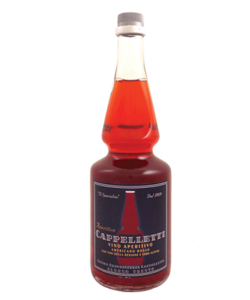 Bitter, sweet, herbal Cappelletti looks like Campari, but, unlike the category leader, this Italian aperitivo is made with a wine base. Its fruity flavors are lighter and sweeter than Campari, so we recommend mixing with drier red vermouth and less juniper-forward gins, like Hendricks or Bluecoat. Alternatively, sip it alone over ice. Average price: $20.
Bitter, sweet, herbal Cappelletti looks like Campari, but, unlike the category leader, this Italian aperitivo is made with a wine base. Its fruity flavors are lighter and sweeter than Campari, so we recommend mixing with drier red vermouth and less juniper-forward gins, like Hendricks or Bluecoat. Alternatively, sip it alone over ice. Average price: $20.
Contratto Bitter
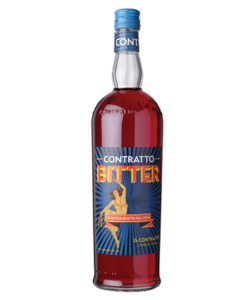 Contratto has a strikingly beautiful bottle and bright red hue, which comes from 100-percent natural carrot and red beet extracts. Made from an Italian brandy base, this aperitivo’s botanical aromas will appeal to Campari fans, while its muted bitterness will lure in those who traditionally prefer Aperol. Mixed with gin and sweet vermouth, Contratto serves up a rich, nuanced Negroni. Average price: $25.
Contratto has a strikingly beautiful bottle and bright red hue, which comes from 100-percent natural carrot and red beet extracts. Made from an Italian brandy base, this aperitivo’s botanical aromas will appeal to Campari fans, while its muted bitterness will lure in those who traditionally prefer Aperol. Mixed with gin and sweet vermouth, Contratto serves up a rich, nuanced Negroni. Average price: $25.
Leopold Bros. Aperitivo
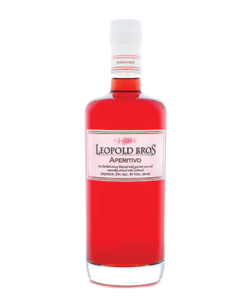 When Denver-based Leopold Bros. launched its Aperitivo in 2015, it provided us with our favorite domestic Campari alternative. This liqueur complements gin and sweet vermouth so well, it almost feels like it was custom-designed with Negronis in mind. Less sweet than Campari, with attractive grapefruit peel and red fruit flavors, this is a well-balanced aperitivo with a lasting dry finish. Average price: $33.
When Denver-based Leopold Bros. launched its Aperitivo in 2015, it provided us with our favorite domestic Campari alternative. This liqueur complements gin and sweet vermouth so well, it almost feels like it was custom-designed with Negronis in mind. Less sweet than Campari, with attractive grapefruit peel and red fruit flavors, this is a well-balanced aperitivo with a lasting dry finish. Average price: $33.
Luxardo Bitter
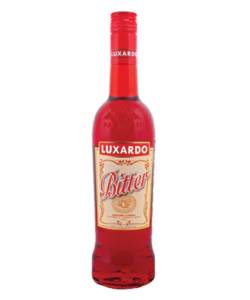 Cocktail enthusiasts will no doubt be familiar with Luxardo’s tall, straw-covered bottles of Maraschino liqueur. U.K. millennials, on the other hand (like this writer), might closer associate the brand with sambuca shots and bad decisions. But Luxardo’s Bitter earns the brand inclusion in the Campari-alternative conversation. The strongly flavored, bitter-orange, rhubarb, marjoram, and thyme liqueur is robust enough to handle juniper-heavy gins and sweet, viscous vermouths. Luxardo also makes a Bitter Bianco for those who prefer a White Negroni. Average price: $23.
Cocktail enthusiasts will no doubt be familiar with Luxardo’s tall, straw-covered bottles of Maraschino liqueur. U.K. millennials, on the other hand (like this writer), might closer associate the brand with sambuca shots and bad decisions. But Luxardo’s Bitter earns the brand inclusion in the Campari-alternative conversation. The strongly flavored, bitter-orange, rhubarb, marjoram, and thyme liqueur is robust enough to handle juniper-heavy gins and sweet, viscous vermouths. Luxardo also makes a Bitter Bianco for those who prefer a White Negroni. Average price: $23.
Meletti 1870
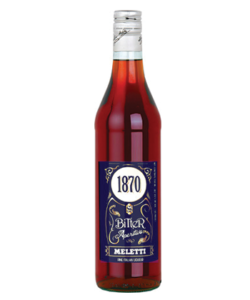 From Marches, Italy comes Meletti 1870. It’s a traditional Italian aperitivo, blending sweet orange, bitter orange, and spice and herb distillates with pure spirit. The result is a slightly bitter, refreshing liqueur. In Italy, drinkers traditionally prefer 1870 as part of an Americano, but its bittersweet citrus notes and complex, spiced finish also make it ideal in a Negroni. Average price: $23.
From Marches, Italy comes Meletti 1870. It’s a traditional Italian aperitivo, blending sweet orange, bitter orange, and spice and herb distillates with pure spirit. The result is a slightly bitter, refreshing liqueur. In Italy, drinkers traditionally prefer 1870 as part of an Americano, but its bittersweet citrus notes and complex, spiced finish also make it ideal in a Negroni. Average price: $23.
Martini & Rossi Riserva Speciale Bitter Liqueur
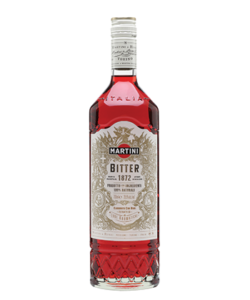 When talking about Negronis, mention Martini & Rossi, and most will think you’re debating which vermouth to include. But the iconic Italian brand also offers a crimson-colored, intensely flavored aperitivo. Infused with cinchona bark (which you might recognize from its inclusion in tonic water), this is one for fans of extremely dry, bitter Negronis. Average price: $20.
When talking about Negronis, mention Martini & Rossi, and most will think you’re debating which vermouth to include. But the iconic Italian brand also offers a crimson-colored, intensely flavored aperitivo. Infused with cinchona bark (which you might recognize from its inclusion in tonic water), this is one for fans of extremely dry, bitter Negronis. Average price: $20.
Tempus Fugit Gran Classico
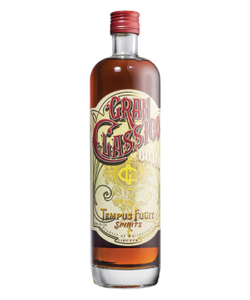 Gran Classico originally hails from Turin, but, in 1925, its recipe was sold to Swiss distiller Tempus Fugit. Its gold-amber color means the liqueur doesn’t look like a Campari alternative, but its recipe, which contains 25 herbs and roots, capably delivers the flavors required to stand up in a Negroni. Sipped alone, or with gin and sweet vermouth, Gran Classico offers a lasting, complex finish, dominated by rhubarb, burnt orange peel, and gentian. Average price: $38.
Gran Classico originally hails from Turin, but, in 1925, its recipe was sold to Swiss distiller Tempus Fugit. Its gold-amber color means the liqueur doesn’t look like a Campari alternative, but its recipe, which contains 25 herbs and roots, capably delivers the flavors required to stand up in a Negroni. Sipped alone, or with gin and sweet vermouth, Gran Classico offers a lasting, complex finish, dominated by rhubarb, burnt orange peel, and gentian. Average price: $38.
